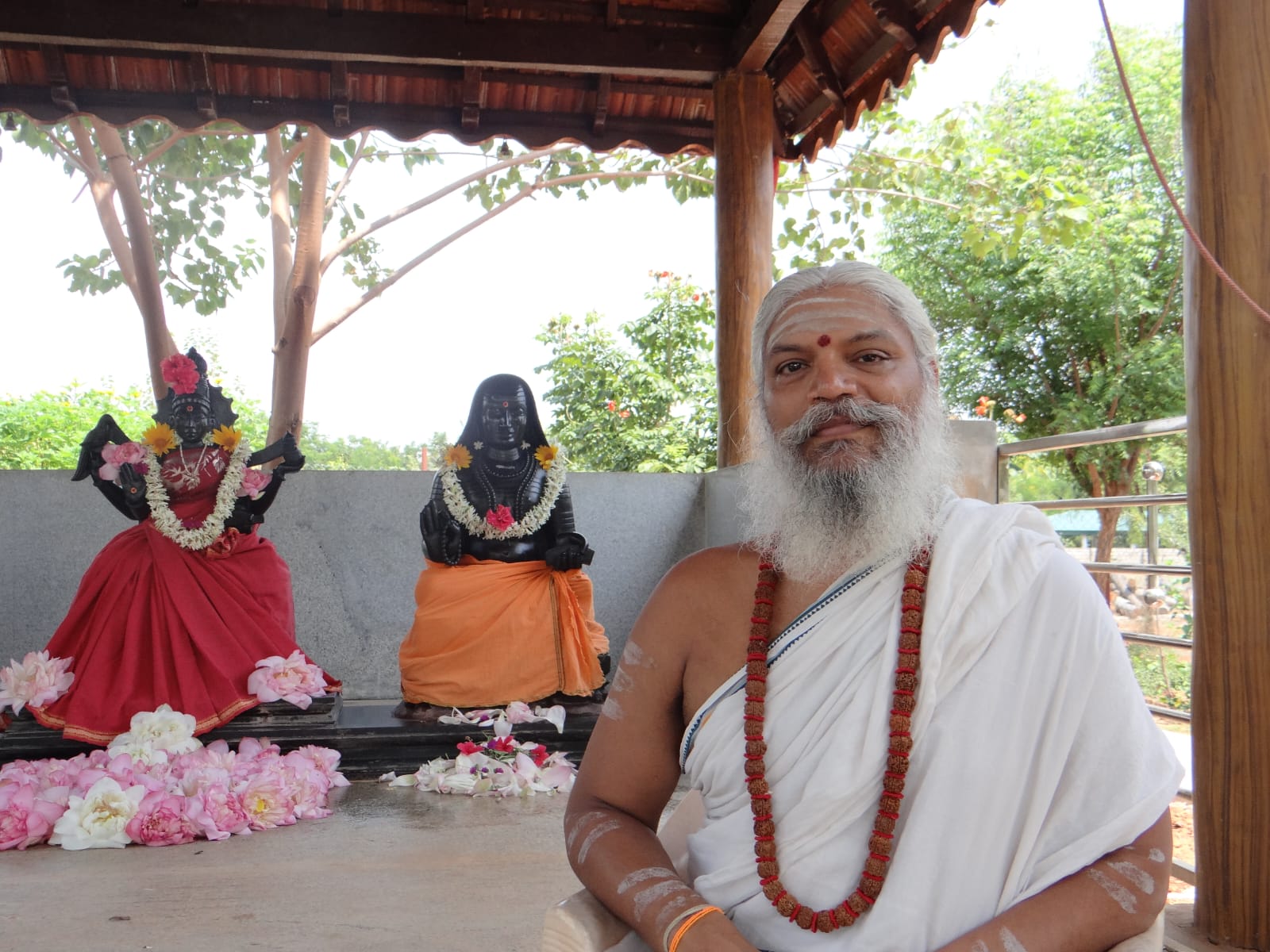This interview with Dr R Balasubramaniam (Author and member -HRCapacity building Commision, Government of Bharat) explores leadership through an Indic lens, contrasting it with Western perspectives that emphasize individual traits. It delves into lessons learned from indigenous wisdom, Raja Dharma, and historical texts like the Ramayana, Mahabharata, and Arthashastra. The conversation highlights the importance of Seva (selfless service), Thyaga (renunciation), and Ekatvam (oneness) in leadership, while also addressing modern governance challenges. It discusses the role of self-awareness in leadership, the balance between material and spiritual responsibilities, and the broader task of decolonization—reclaiming India's identity through self-reliance and cultural confidence.
How can a nation like India believe in herself after centuries of colonization? How do we decolonize?
Decolonization is not just a word but a mind-set shift. It requires intense self-awareness. Atma Nirbhar (self-reliance), Garv (pride), social equity, and global visibility are all crucial. The National Education Policy is key to shaping the next generation in traditional thinking. Decolonization is about appropriateness, context, understanding symbols, and taking pride in our heritage. We must work together—Samaj (society), Sarkar (government), and Bazaar (market). Colonization affects all of us. Even small things, like the global acceptance of Indian food, are part of decolonization. It is a way of thinking, living, and immersing ourselves in Indic life.
What is leadership in the traditional context?
Leadership, traditionally from the Western lens, is often seen as a person with specific traits and behaviors. It is about celebrating the individual leader, with actions seen as a by-product. In Indic thinking, leadership is not about being a celebrated individual on a pedestal. It is about the actions performed within the defined ecosystem. Civilizationally, Swami Vivekananda said that perhaps India is the only country that focused on context. In the West, the leader constantly controls responses to the ecosystem, making it about the external. Vivekananda said that in India, we focus not only on external nature but also dive deep within ourselves to control our internal nature. Even that internal nature, he said, must have practical societal value, and the final purpose of man is to recognize union with the divine. Leadership, therefore, is about understanding who you are, what your purpose is, and the context in which you operate. All of us exist within micro-ecosystems, and we must understand others within the larger macro-system. Leadership is spirituality in action. Jagat hita (welfare of the world) is important, but Atmano moksha (self-liberation) is the ultimate goal.
Where did you learn your leadership lessons? Was it from your work with the SEBI Social Network or the HR Department of the government?
All the roles you describe are recent. My real-life journey began nearly 40 years ago with indigenous Adivasi communities. I started my career as a physician, which placed me in a different space. In India, the doctor-patient relationship is hierarchical. Patients do not see doctors as equals but as problem solvers. Growing up in Bangalore, I thought I had the answers to the problems of the rural poor. However, within a few years, I realized that these communities were embedded with enormous wisdom. Mainstream society often equates poverty with ignorance and assumes that it brings all problems of the world. However, in my interactions with traditional chieftains, I realized that their leadership was not only extensive and political but also driven by a deeper cause.
One particular incident shaped my understanding. I assumed that tribals were poor and needed interventions to improve their condition. The area I worked in was a Project Elephant and Tiger reserve. I thought we should cultivate crops that elephants would not destroy. We chose cabbage, which elephants do not eat. That year, the elephants did not attack the cabbage farms, and we had a bumper crop. I decided to sell it in Mysore. Unaware of the agricultural market mafia, I loaded a truck with cabbages. The price had been Rs 6 per kg the previous year, but the buyer offered me just 30 paise per kg. I was devastated and considered dumping the cabbages on the road or taking them back. My tribal friends suggested donating them to all the anatha ashramas (orphanages). The elderly chieftain, Kempaiah, asked why I was so depressed. He said, "Oh, you are looking at the crop, I didn’t realize that. You are trained to see things in terms of money. Try to see the crop as an extraordinary act of God. You plant a seed, and before your eyes, you see God creating. You cannot see God's creation in any other way. Let it go."
In one stroke, he explained the concepts of doership and enjoyership—both of which, he said, are not ours. "We are all instruments," he said. This experience made me realize the depth of indigenous wisdom and the lessons I could learn from it. This was the beginning of my journey back. My journey also took me to Harvard, where I thought I would find the knowledge I sought. But I soon realized that real wisdom was what I had experienced, not what I was getting from degrees or college.
Three years ago, I was appointed to the Capacity Building Commission under Mission Karma Yogi. For the first time, the government recognized the need to prepare bureaucracy for the future—not just by developing skills but by cultivating the mindset of a Karma Yogi. Our mandate was to elevate them from being Karmacharis (workers) to Karma Yogis (selfless doers).
How do you explain the concept of Raja Dharma?
Both the Ramayana and Mahabharata describe Raja Dharma, as does Kautilya in the Arthashastra. Each offers a different perspective. The most culturally appropriate explanation is found in the ten tenets of Raja Dharma. In the Mahabharata, Yudhishthira discusses this with Bhishma on his bed of arrows. In the Ramayana, we often celebrate Rama as an individual but rarely see him as a king. He is the perfect Purusha. Bharata, on the other hand, is tense, insecure, and unsure of leadership. He places Rama’s padukas (footwear) on the throne, signifying that he rules as a representative. Similarly, our parliamentarians represent the real rulers—the people.
Rama eloquently describes how a ruler should govern—how to care for the poor, travelers, and ministers, what counsel to take, how to validate it, and how trade and commerce should function to sustain the economy. It is a beautiful conversation on Raja Dharma. The Arthashastra, meanwhile, is a masterpiece of practical governance. Chanakya simplifies the ruler’s mandate into two duties: Loka Sangraha (welfare of all) and Yoga Kshema (security of acquisitions and future stability). This includes emotional, social, and financial security. A ruler must also uphold personal discipline. Chanakya states that the ruler who ensures these two responsibilities is one who has achieved Indriya Vijaya—control over the senses.
How does one rule like Janaka in today’s world of corruption, competition, and rivalry?
A ruler must possess vision beyond personal interests. True leadership is rooted in Seva (selfless service) and Nisswarthata (selflessness). Swami Vivekananda said that India’s two national ideals are Seva and Thyaga (renunciation).
Patanjali’s Yoga Sutras are critical for any seeker, especially one impacting millions. Vivekananda advised, "Take up one cause and one cause alone. Breathe it, live it, sleep on it, and then enormous power will be generated."
Leaders must remain focused despite distractions. Living in the present ensures Ekatvam (oneness) and Samatvam (equanimity), shielding them from external noise. True equipoise, as described in the Gita, is difficult but essential.
A leader must balance short-term and long-term goals. Our scriptures describe this as Shreyas (the ultimate good) and Preyas (immediate pleasure). Vivekananda said, "You can’t teach the Bhagavad Gita to someone on an empty stomach." Physical needs must be met before spiritual aspirations. Sharirik Seva (bodily service) should not overshadow Bhautik Seva (material service). Sahahridyata (shared hearts) should lead to Sahakaryata (collaboration).
Does everyone have inborn leadership qualities? Self-awareness shapes and clarifies purpose. In India, we speak of Samarpan (surrender), which is often misunderstood as helplessness. In reality, it means recognizing a higher force working through us. Leadership is not about being the doer but about allowing things to manifest through us. When we reach that state, devoid of selfishness and transactions, Karma becomes Karma Yoga. As we go deeper, we dissolve into the Karma and the Yoga, achieving oneness.
(Watch Video interview: https://youtu.be/0AScJTUbGJI?si=1ZM4uVf2blX3SykD)




